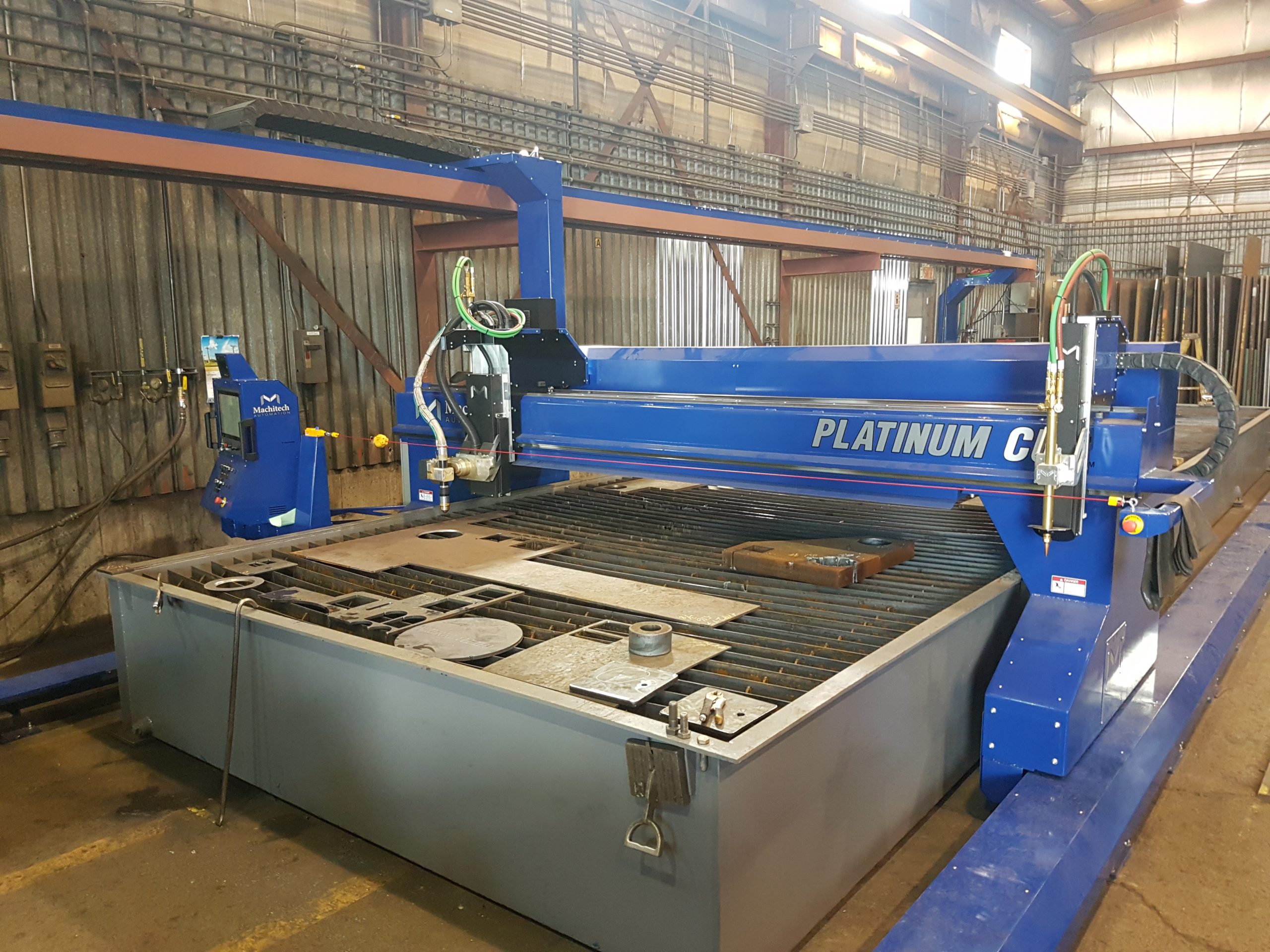When it comes to buying a CNC plasma cutting systems, there are many Original Equipment Manufacturers (OEMs) claiming to have the best option on the market. Variables in the manufacturing designs and key components can be difficult to compare and making the right choice is crucial to your long-term return of investment. In an interview with retired motion expert Brad Meyers (formerly with Hypertherm Inc.), he said “Machine quality starts with a solid foundation and is coupled with quality components carefully selected based on a machine’s design and demand”. In this article we review structural aspects of machine designs and key components of the motion system to help consumers select the machine that best meets their application demands and budget.
Starting with the foundation, the thickness of material being used in the frame is key. Much of the machine manufacturing cost is the steel and often lower cost machines will use thinner material and less bracing. These types of designs may allow flex during acceleration and deceleration, which negatively impacts machine accuracy and part repeatability. Specifically, in the light industrial machine class, Brad recommends consumers look for machines with a welded frame rather than ones that are bolted together.
The gantry is the carriage that spans your machine and holds your cutting torch. Any undesired motion in the gantry will translate to the torch and therefore your cut piece. “I would recommend no less than 3/16” thick square tubing for a gantry” said Brad when discussing needs for a cutting machine running a high definition plasma system. The gantry has an end truck on each side that mounts to the rail system. In general, wider end trucks will provide more stability to the gantry. “Properly calculating a gantry’s center of mass is one the most important steps and unfortunately I have seen many designed incorrectly” stated Brad.
To move the gantry, you need motors and the two common types used with plasma cutting systems are stepper and servo. In general industry terms, stepper motors are a lower cost motor used primarily with hobby class and light industrial machines. Servo motors are typically seen in higher end light industrial machines, high definition machines, and large gantry machines.The goal of the motor is to move the gantry and it is important the motor be properly sized. Many OEM’s will use an inertia ratio to calculate motor size with an inertia ratio goal of 10:1 or 8:1 being common. In a servo system, both the motor and load have inertia. The ratio between their inertia will affect the performance of the system. This ratio is one of the most important aspects of servo motor sizing and one of the most overlooked. Servo driven systems will use a gearbox to help the motor achieve the desired inertia ratio and required torque. Brad encourages the use of planetary gearboxes rather than belt driven. Planetary gearboxes share the load across multiple gear teeth providing high stiffness, important for applications with frequent start-stop cycles. Planetary gearboxes also have a lower backlash, which improves machine accuracy.
The gantry and all of the motion equipment move along a rail system. Rail systems may be floor mounted, pedestal mounted, or integrated onto the side of the machine. The rail system will typically consist of a linear bearing guide to steer motion and a rack and pinion to drive motion along an axis. The rail system is key to machine accuracy and long-term repeatability. Looking at factors like load mass, external force, beam deflection, friction, and inertia OEM’s must determine of the proper rail system. Helical racks and pinion gears provides many advantages over straight ones; they run quieter, they have a bigger load carrying capacity and they provide a continuous engagement along the tooth length. A well designed rail system should be positioned in a way to minimize contamination from the cutting process.
This article was written to provide a general overview of key designs and components in the manufacturing of CNC plasma cutting systems. The goal was to provide a list of features you should research when looking at purchasing a cutting machine. By comparing the machine frame, gantry and end truck designs along with key components like motors, gearboxes, linear rails and rack and pinions you can start to compare and evaluate differences in OEM’s designs. It is important to recognize that not all machines are created equal and that repeatable accurate motion matters.
 English
English  Français
Français 
